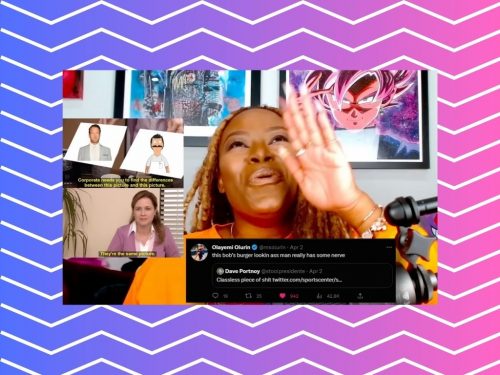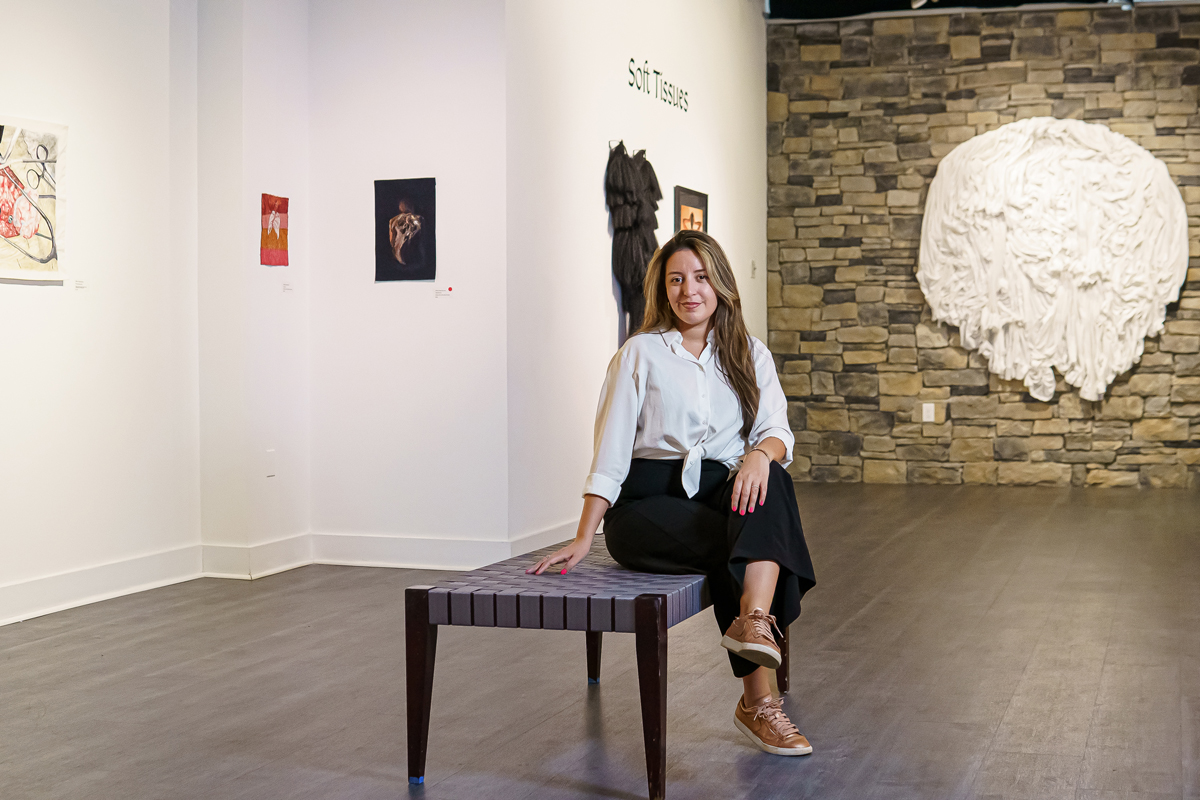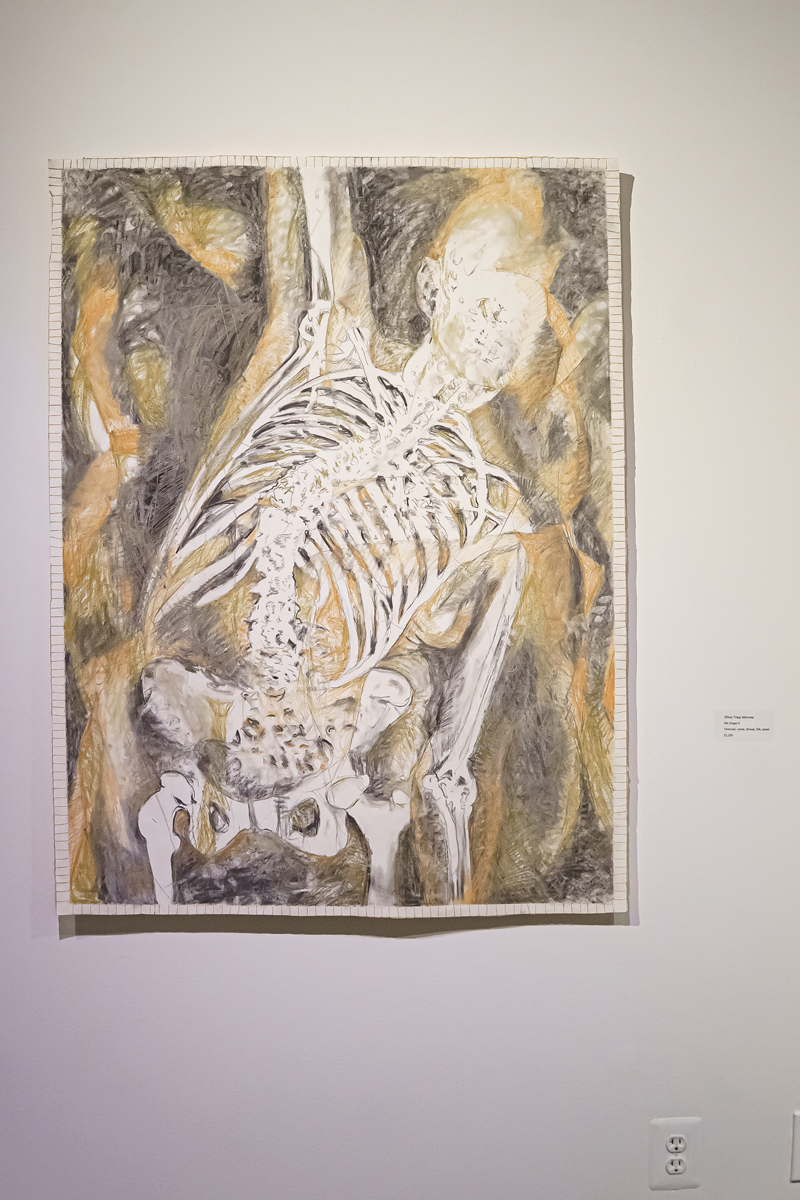Irland’s social practice project is inherently anti-capitalist and ephemeral. With communities that have invited her, Irland sculpts books from ice and includes calligraphic sentences with native seeds and other materials such as limestone to rejuvenate and aid waterways. While a part of her own practice it feels like a bid to create my own “ice books” after I leave the gallery.
These books are also poems of love for the river, and the project not only fosters community around the site but also has a potential, tangible environmental impact. These time-based sculptures have an element of sanctity and they are released into waterways in an almost ritualistic manner. I’m astounded by how ferociously life spurs from tiny seeds.
The video work of Hamilton takes a more metaphorical direction. There is a painterly approach to “Lemon Tree” as it presents seemingly aged footage of a forest and meadow with beings walking through it. Other elements, all shades of blue, are collaged in, including a cicada shell, a spider, a wolf, and a vulture, suggesting an oncoming transformation and death.
These beings are simultaneously specific to a place and also significant allegorically. The spider weaves its web like the artist weaves its tales. Like snowfall in a dream, the image is characterized by a graininess—placing it between fiction and memory. I reminisce about walking through wooded paths and soaking up joy as I listen to the wind dance through leaves.
“Brecencia and Pheasant III” is a spectral archival pigment print with a woman, dressed in a formal skirt and white ornate blouse, standing in the center of a clearing holding a dead pheasant. The grass has been cut in a rounded and elongated pattern around her, almost like crop circles, and the clearing of trees stretches behind her. There is an eerie mood, and it feels like I’m glimpsing a moment of a much larger narrative. This work is from a series of photographs, some featuring the same model and bird in different rural environments. Hamilton mixes history with mythology creating an uncanny combination of elements.
DISordered Systems titillates between macro and micro views of the Earth and its many landscapes. It offers room to ponder climate anxieties and our intimate relationship with the landscape.The artists offer tender narratives of their own experiences of fear, displacement, rejuvenation, and the history that is embedded within the land. The recent environmental catastrophes, such as the one in East Palestine, Ohio, fuels my fears of imminent ruin and destruction. However, the show is not meant to solely cause fear, it also offers an opportunity to reflect on one’s relationship with his or her surroundings and even inspire one to take action, however small.
DISordered Systems is on view at Towson University’s Center for the Arts Gallery through April 15, 2023.














